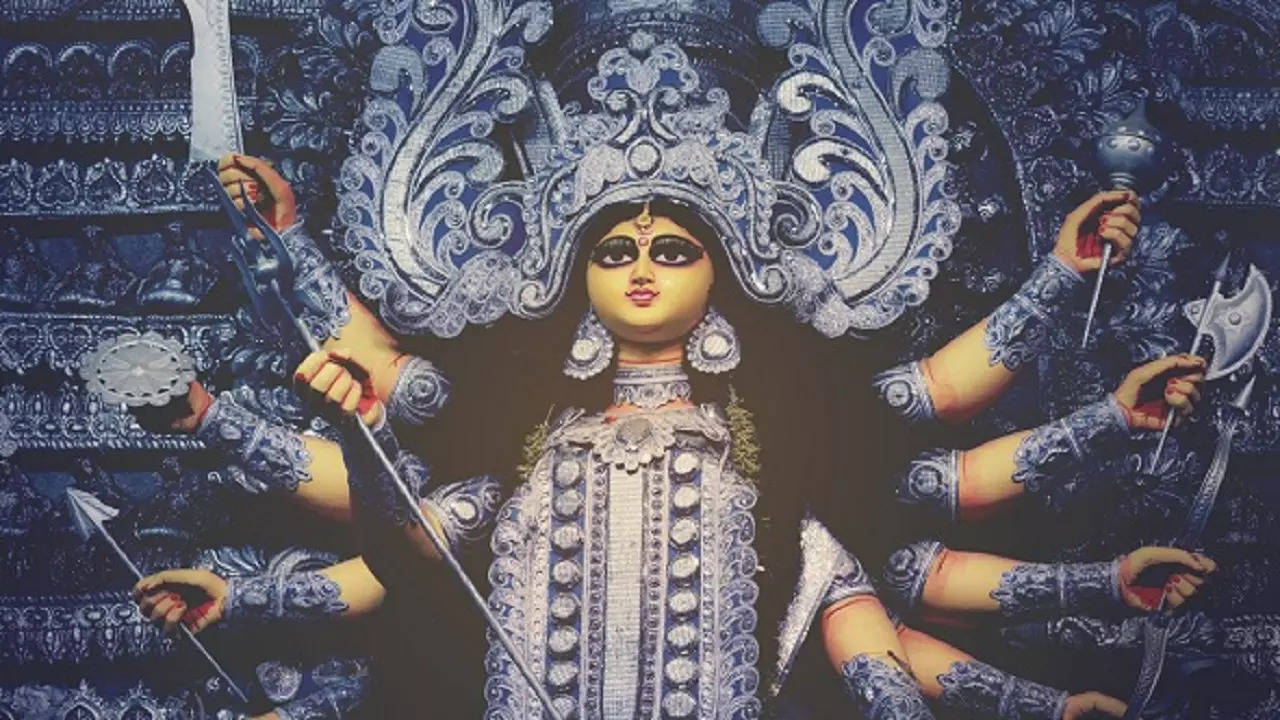Ashadha Navratri Ghatasthapana puja samagri, vidhi and other important details
Asgadha Navratri Ghatasthapana puja samagri and vidhi: The Navratri celebrated in June/July as per the Gregorian calendar is called Ashadha Navratri, a nine-day-long festival dedicated to Mother Goddess Durga and celebrated during the onset of the Monsoons. It commences after New Moon Day (Amavasya) in the Hindu month of Ashadha. Read on to know more.

Ashadha Navratri ghatasthapana puja samagri list and vidhi
Navratri celebrations commence on the Pratipada Tithi (Day 1) with a ritual called Ghatasthapana or Kalash Sthapana. This tradition invokes Mother Goddess Durga in the Kalash (sacred pot), and with this practice, the auspicious nine-day-long festival of Navratri begins.
Kalash sthapana is an elaborate process mainly requiring a few things: a Kalash, a brown coconut with husk, nine food grains, mango or beetle leaves, mud/soil and a big shallow pan. Scroll down for the complete puja samagri list and Ghatasthapana Vidhi.
Samagri for Kalash Sthapana or Ghatasthapana
- A kalash (copper/bronze/brass/silver). Do not use steel or plastic kalash.
- A wooden chowki
- Whole brown coconut with its husk
- A few Mango leaves or betel leaves
- Haldi
- Kumkum
- Chandan
- Akshat
- Water
- Currency coins
- A piece of fresh red cloth
- Flowers
- An earthen tray or a plate bigger than the Kalash.
- Brown soil or clay
- Nav Dhanya (seeds of nine different grains)
Puja Samagri for Puja of Nav Durga
- Fresh unused pieces of red cloth
- Shringar items (sindoor, mehendi, kajal, bindi, bangles, toe ring, comb, aalta, mirror, anklets, perfume, earrings, nose pin, necklace, red chunri, mahavar, hairpins etc)
- Sesame or mustard oil or ghee for the lamp (for Akhand Jyot)
- Cotton wicks
- Brass/silver lamp
- Gangajal (for cleansing the puja area)
- Dhoop
- Agarbatti (incense sticks)
- Coconut
- Akshat
- Paan and supari
- Goddess Durga's photo or idol made of Pancha Dhatu (five metals)
- Kumkum
- Haldi
- Chandan
- Camphor (Kapur)
- Sacred thread/ Kalava (red and yellow)
- Sweets
- Flowers
- Fruits (banana and any other fruit)
- Laung-elaichi (clove and cardamom)
- Batasha
- Naivedya or bhog
- A few currency coins
- Trays for arranging the offerings
- Toran made of mango leaves for the main entrance of your home
- Decorative lights (optional)
Here's how the sthapana is done:
You may place the Kalash on or next to the altar, the most sacred place in your house. Therefore, make the preparations accordingly.
There are various ways of doing the Kalash Sthapana. Here's one of the methods:
Place an earthen pan on a wooden stool (chowki). Spread the mud in the pan and evenly sow the nine different grains. Then cover it with another thin layer of soil and sprinkle some water.
Then, take a copper /brass/bronze/silver Kalash. Apply Haldi and Kumkum. Add water, and put mango leaves inside the mouth of the Kalash so that the leaves face upward and spill over its neck. Then place a coconut on the mouth of the Kalash. Now drape the Kalash and coconut with a fresh red cloth and garland it. Now carefully place the decorated Kalash in the centre of the pan. Make sure you water the pan every day.
Then light an earthen or traditional lamp made of brass/ bronze/ copper/ silver with ghee or sesame/mustard oil. Offer incense stick and dhoop, flowers, fruits, paan, supari and bhog. Worship Goddess Durga and conclude the Panchopachara puja by singing the aarti.
Significance of Ghatasthapana
Food grains represent life, while mud and water are lifelines. During these nine days, the grains germinate and grow into tiny sprouts. This process symbolises growth and prosperity.
Trending:
End of Article
Subscribe to our daily Newsletter!





Related News





Do you Know Why ‘Om’ is Considered the Sound of Creation? Let us Find out the Rules and Benefits of Chanting it

Akshaya Tritiya 2024: Goddess Lakshmi will Bless These Zodiac Signs on This Auspicious Day

Trikal Sandhya: The Three Shlokas To Help You Change Your Life For The Better

Know Rules of Lighting Diya Before Puja, Which Direction is Auspicious, How Many Times to Rotate the Aarti

Sacred Significance Of Chandragup Mud Volcano In Pakistan For Hindus









